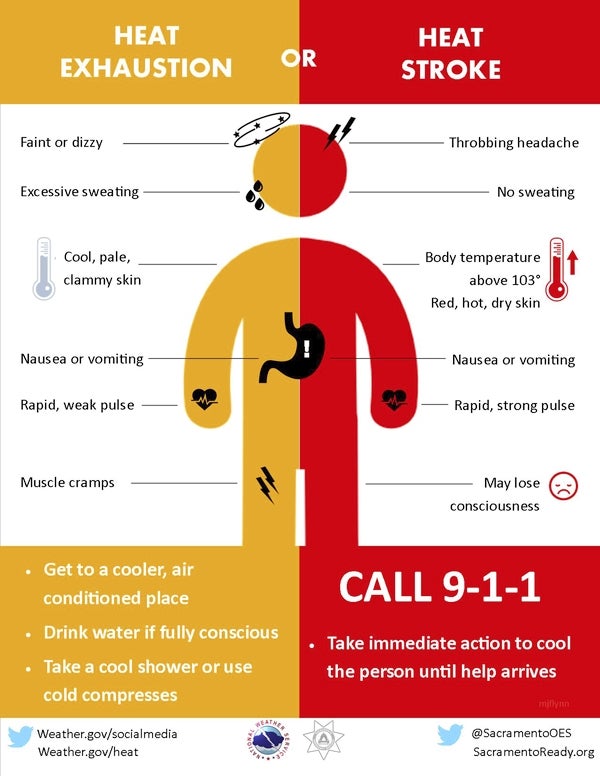Staying safe in the heat
Published 1:00 pm Thursday, July 7, 2016
With temperatures reaching the upper 90s for the days ahead and a heat index of 102 for Friday, heat safety practices are important to keep in mind.
According to the National Weather Service, heat is one of the most common causes of weather-related death in the country. Hundreds of people die and suffer from heat-related illnesses every year.
To keep people safe during the heat, the National Weather Service advises people working on job sites to stay hydrated and take breaks in the shade often. Individuals should check in on elderly or sick neighbors, or those who do not have air conditioning.
Don’t leave children or pets inside vehicles unattended. According to information provided by San Jose State University, 24 children died from vehicular heatstroke in 2015 and 16 children have already died this year. In just 10 minutes, a car exposed to sun rays can heat the inside of a car up to 99 degrees when it is just 80 degrees outside.
The National Weather Service also advises cutting down on vigorous outdoor activities and drinking fluids and staying in the shade if doing so.
Some common heat-related illnesses to look out for are heat cramps, heat exhaustion, and heatstroke.
The National Weather Service identifies heat cramps as the first possible sign of heat-related illness that could lead to heat exhaustion or stroke.
Symptoms include painful muscle cramps and spasms in the legs and abdomen and heavy sweating. First aid tips include applying pressure on the cramping muscles or gently massaging the area to relieve the spasm. Individuals can also give the victim sips of water, but if the victim is nauseous, stop giving water.
For heat exhaustion, the symptoms include heavy sweating, weakness, cool, pale and clammy skin, fast, weak pulse, possible muscle cramps, dizziness, nausea or vomiting and fainting. To help, get the person to a cooler spot, lay him or her down and loosen his or her clothing, put cool, wet cloths on as much of his or her body as possible and offer the person sips of water. If the victim vomits more than once, then medical attention is necessary.
Heatstroke is the most serious of the heat-related illnesses. If a person is experiencing a heatstroke, call 911 or get him or her to a hospital immediately as any delay could lead to death.
Symptoms of a heatstroke include an altered mental state, a body temperature above 103 degrees Fahrenheit, hot, red, dry or moist skin, a pulse that is fast and strong and fainting or loss of consciousness. One or more of the following symptoms could also signal a heatstroke: throbbing headache, confusion, nausea, dizziness or shallow breathing.
If waiting for an ambulance, the National Weather Service advises moving the heatstroke victim to a cooler place that is air-conditioned if possible. Try and lower the victim’s body temperature with cool cloths or a bath. Be aware that fans can make a person hotter at high temperatures, so only use one if heat index temperatures are below the high 90s. It is also important to not give fluids to a person suffering from heatstroke.
For more information, visit www.nws.noaa.gov/om/heat/heat-illness.shtml.


